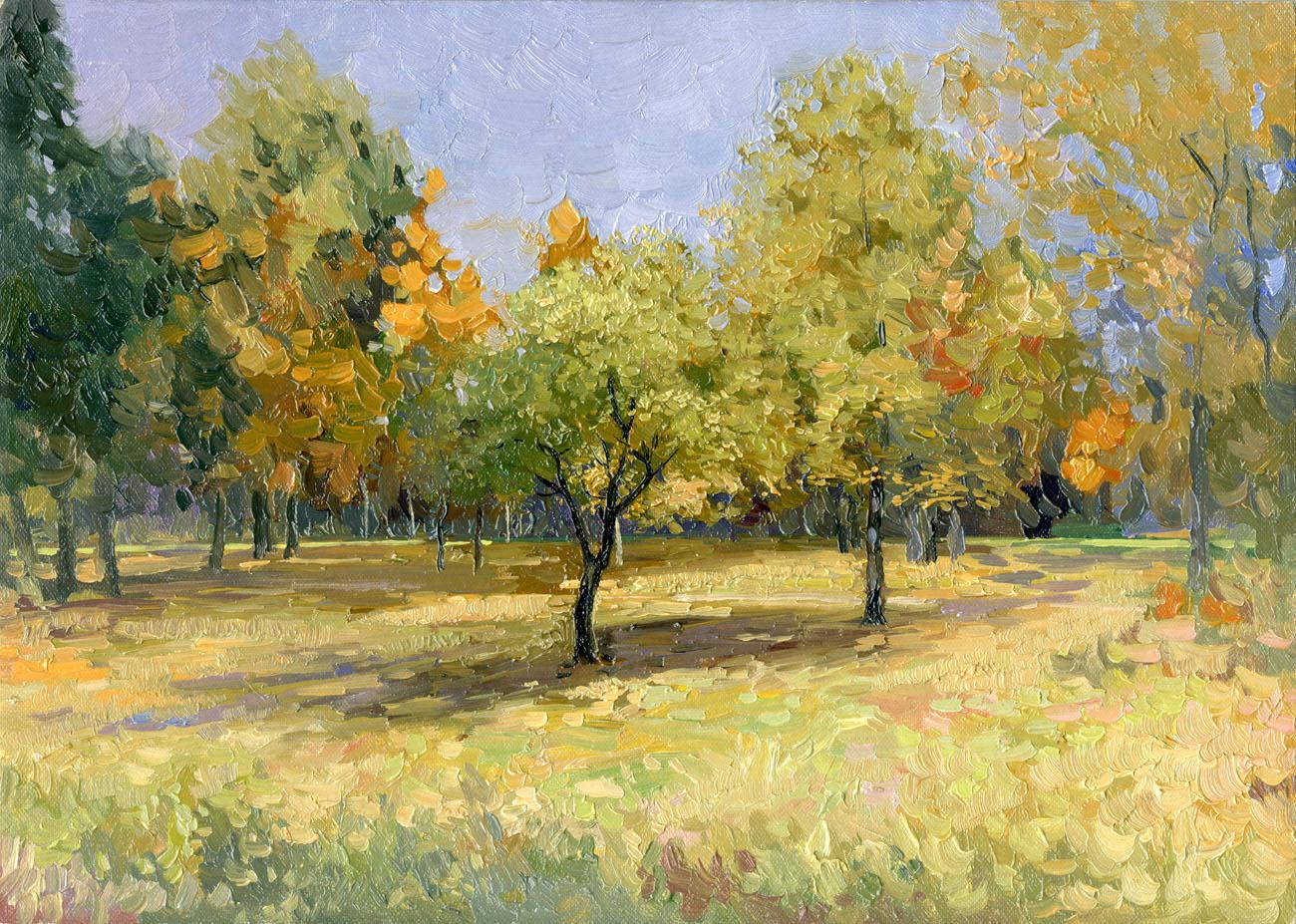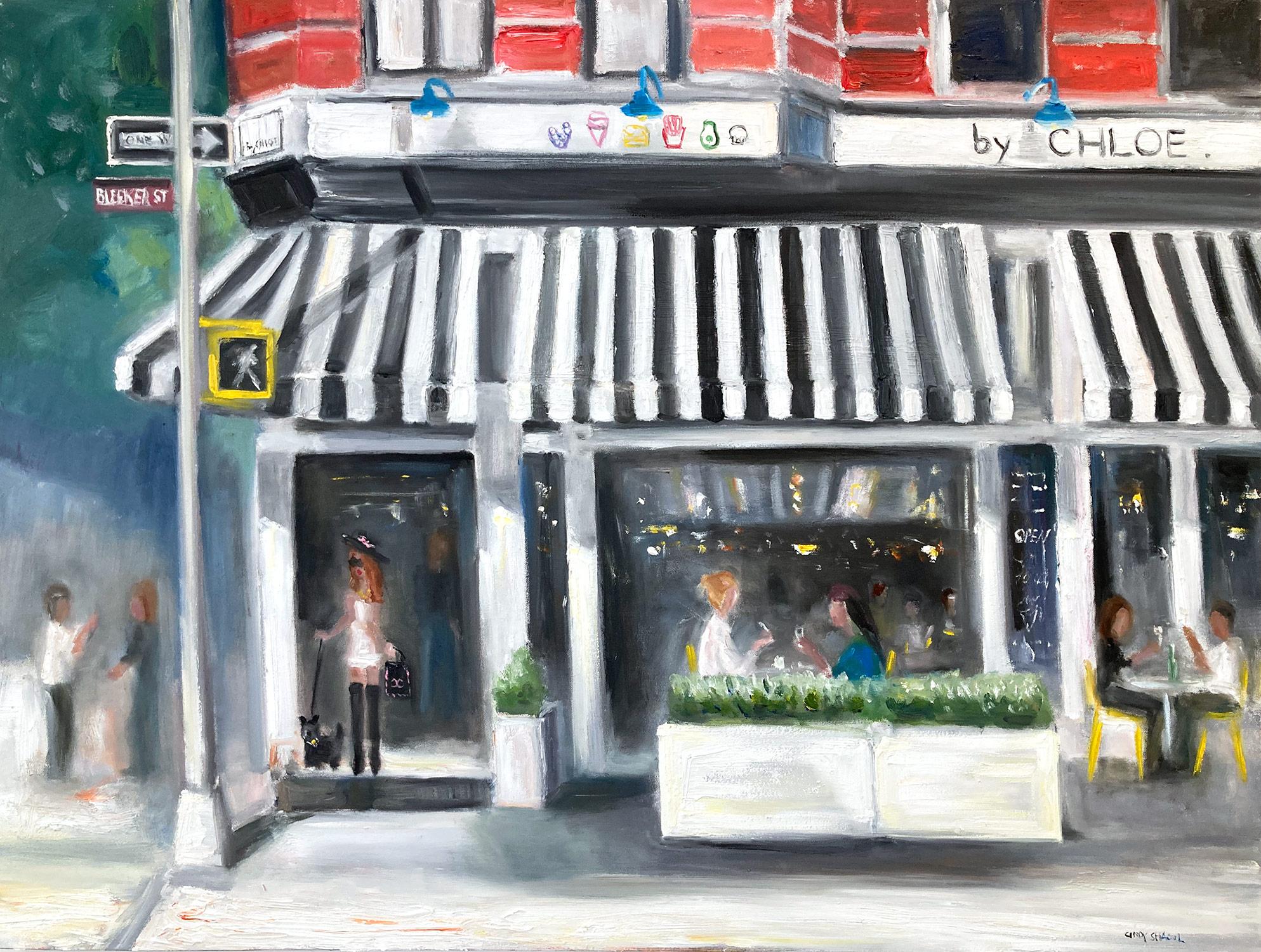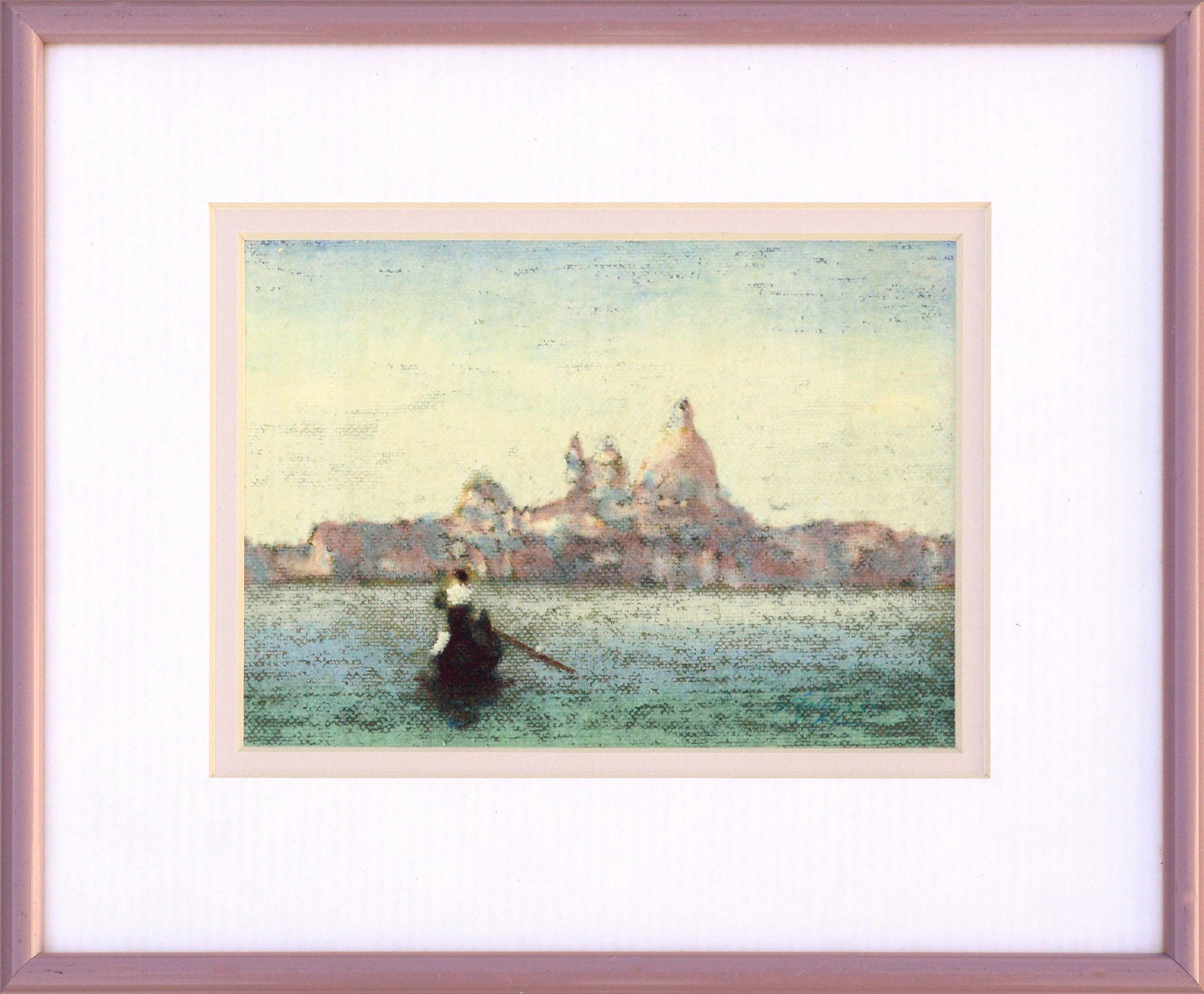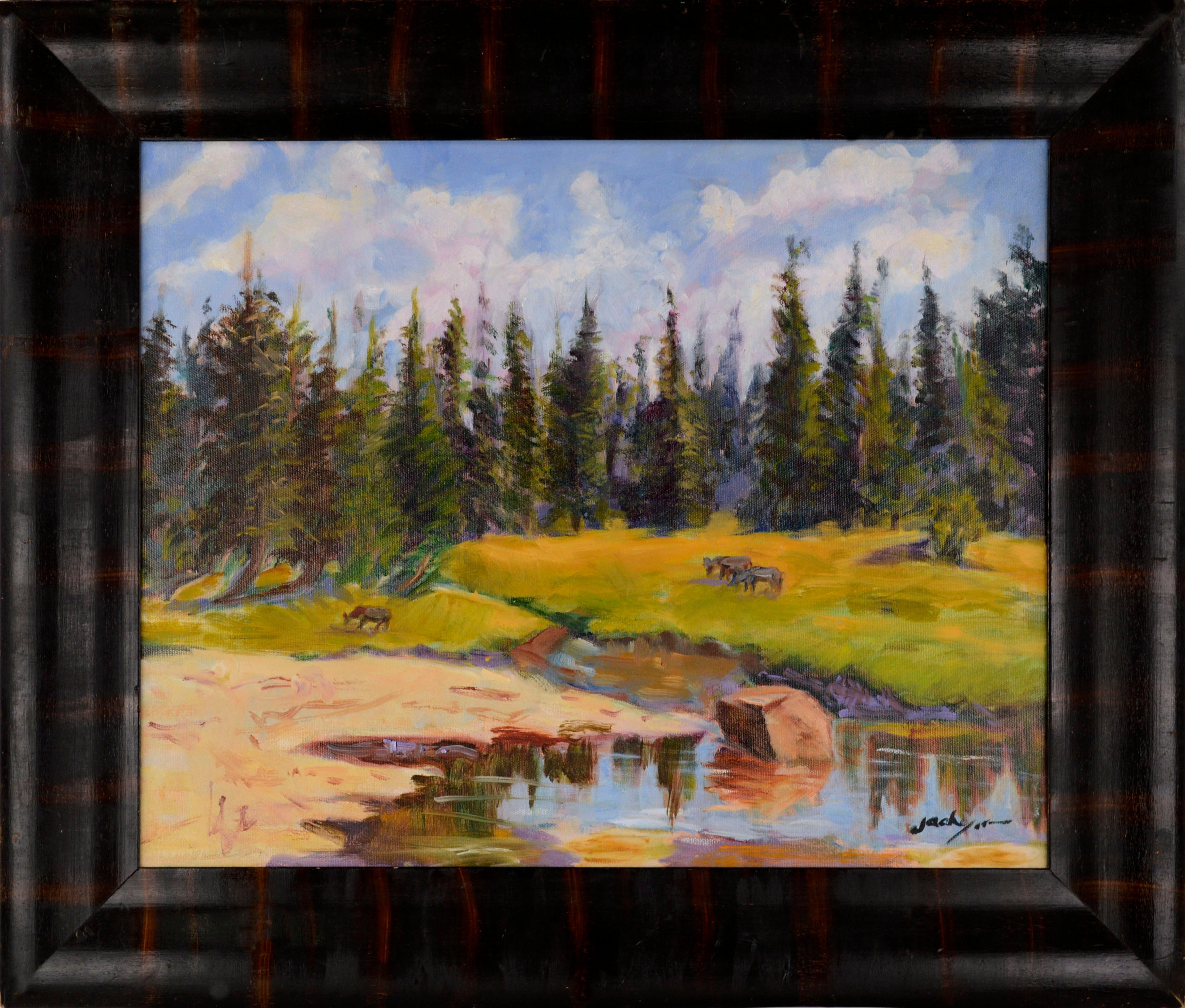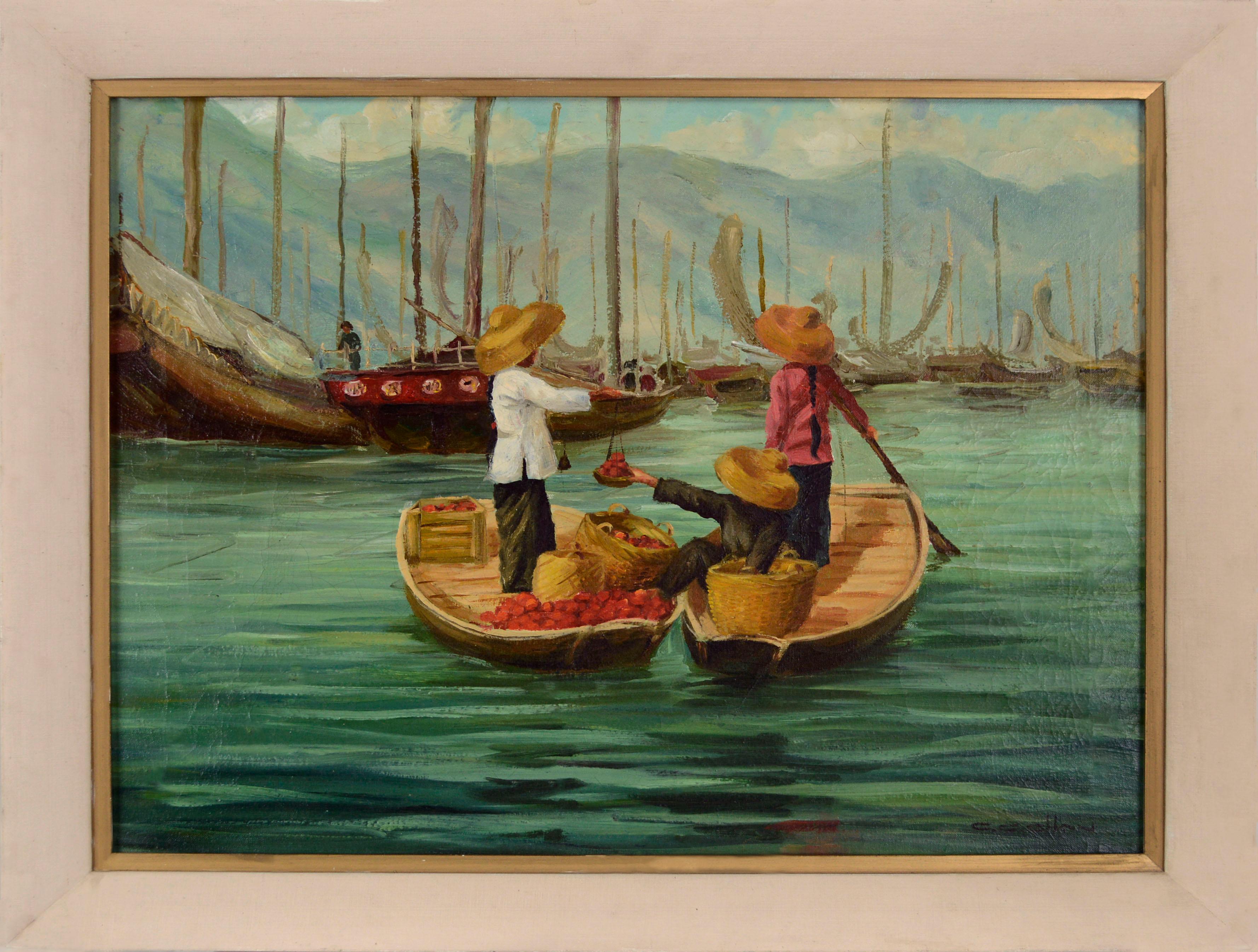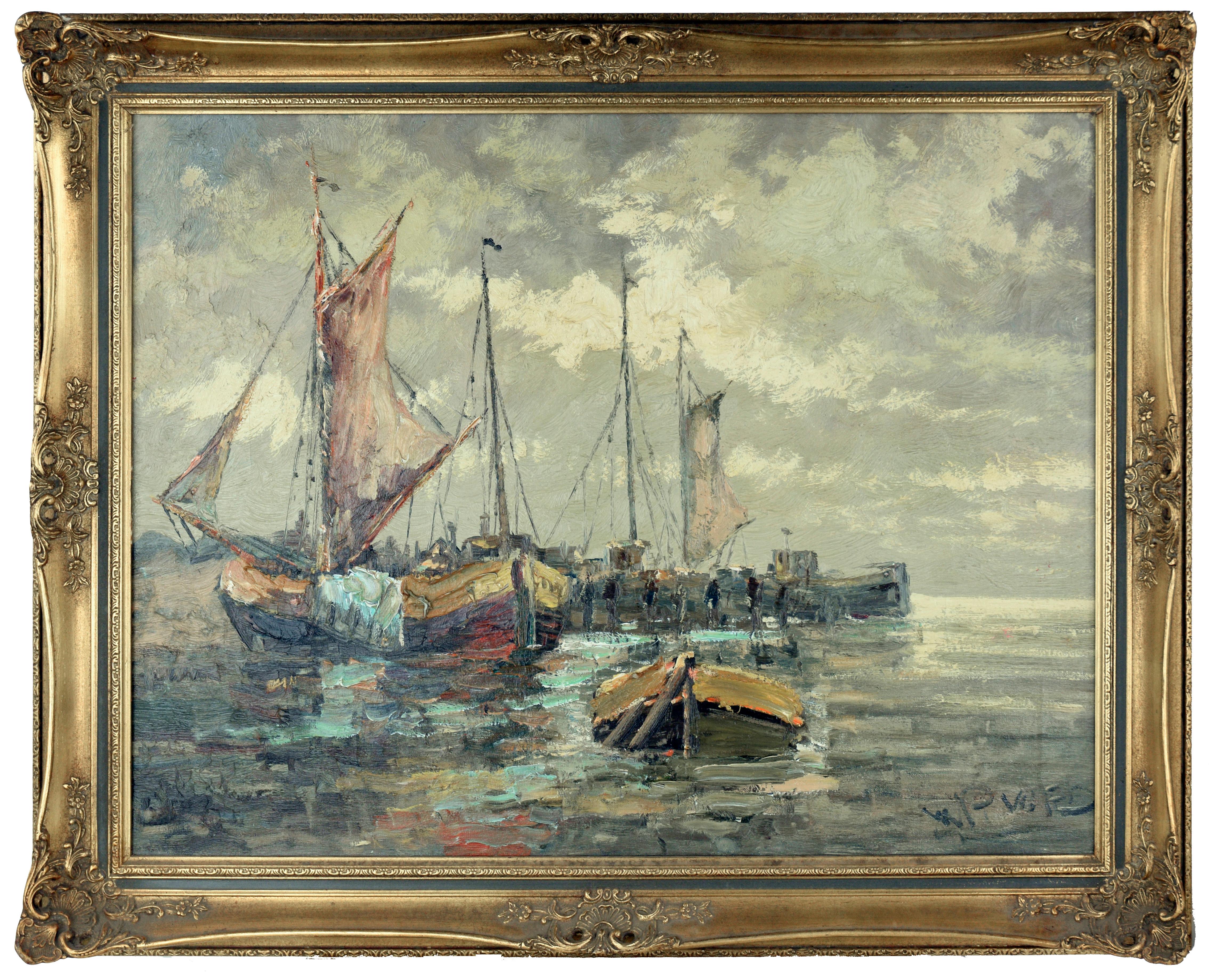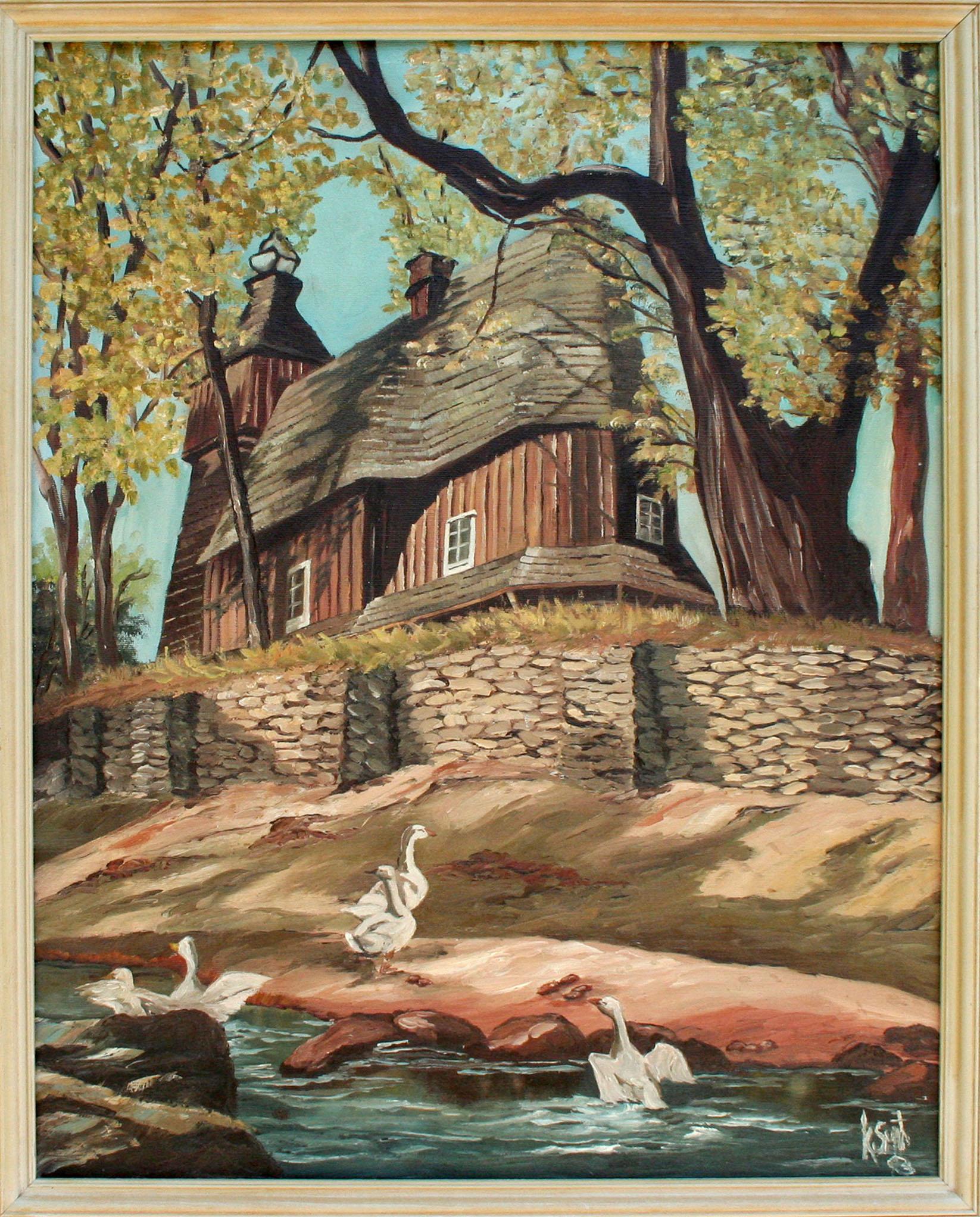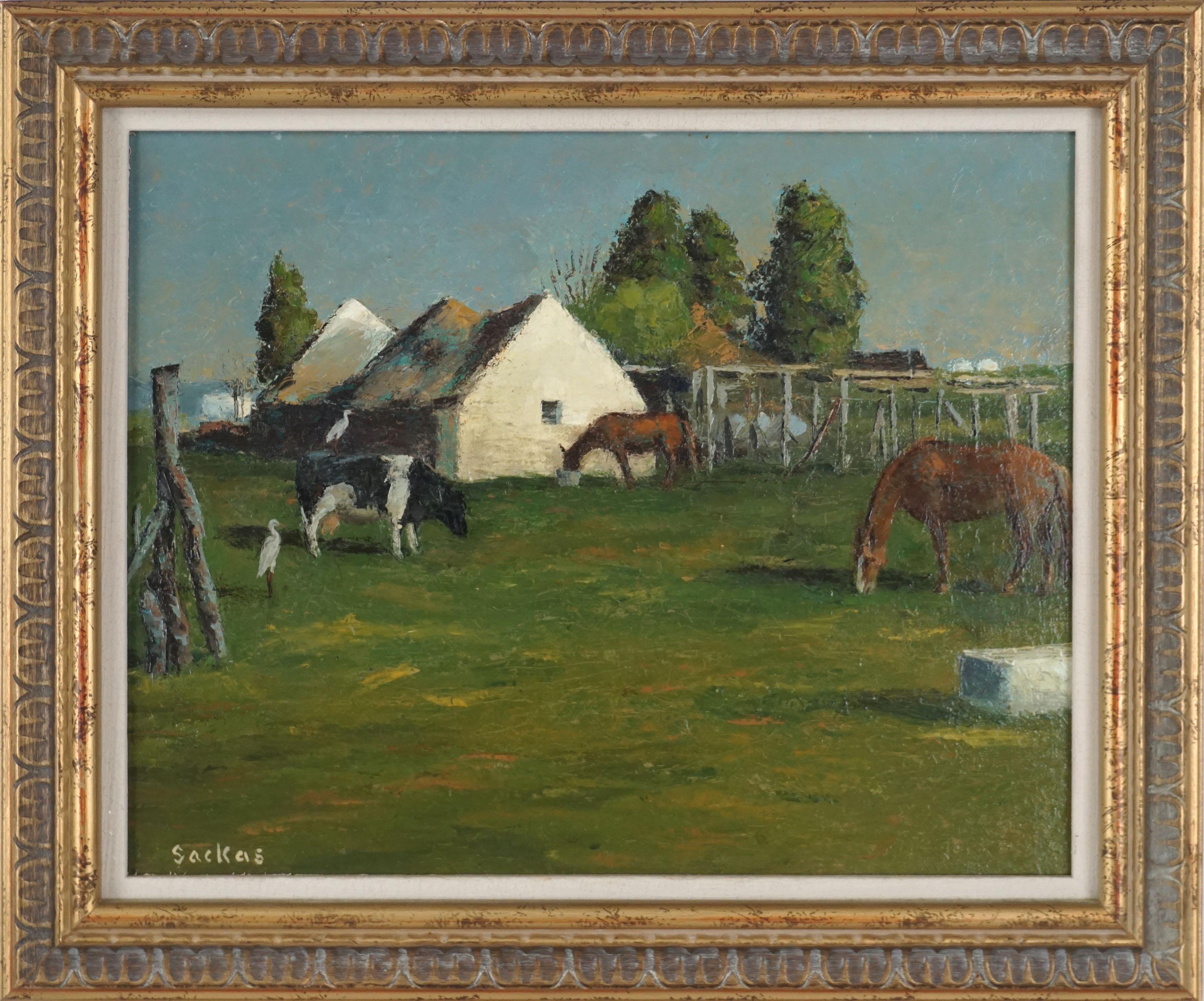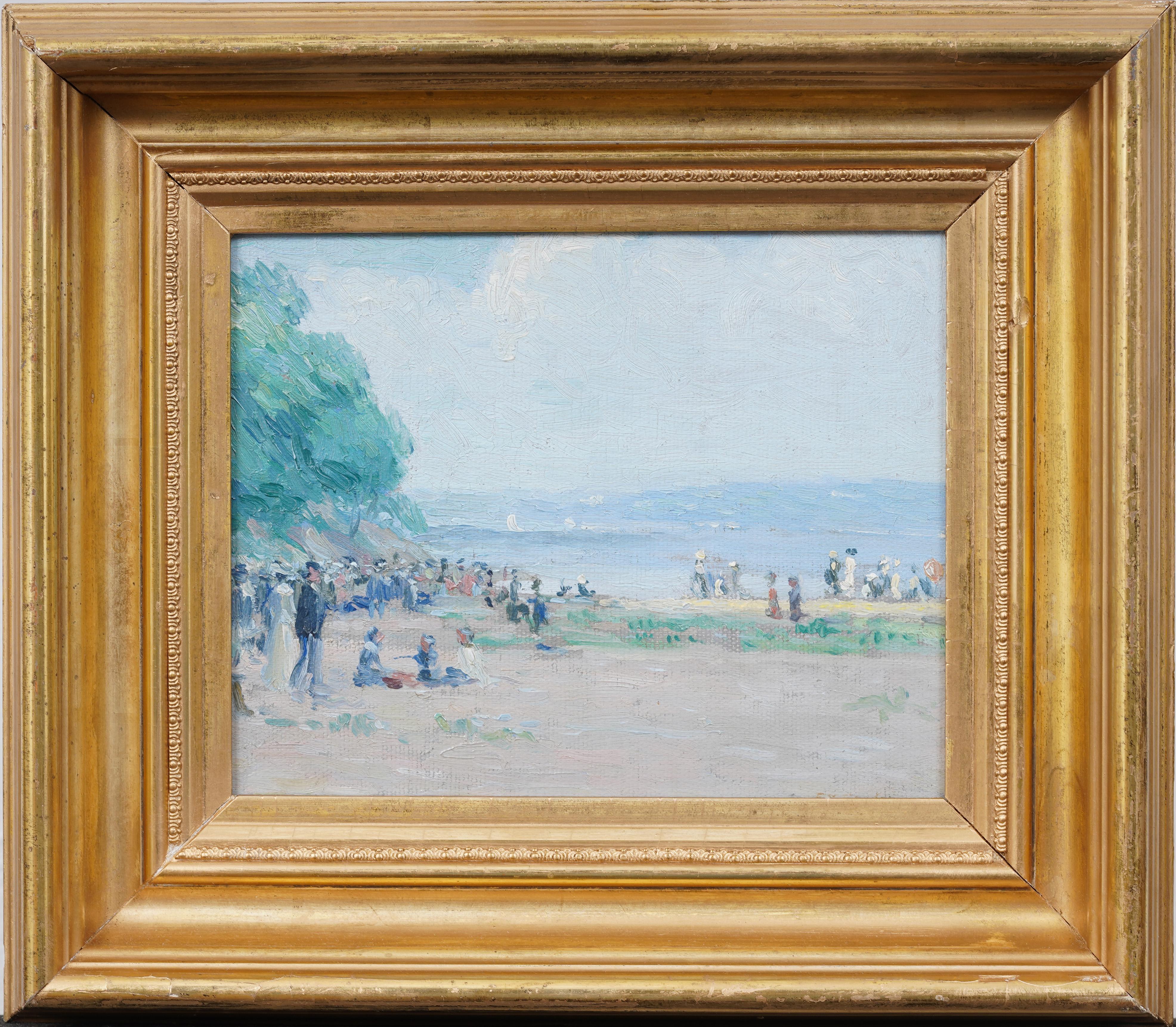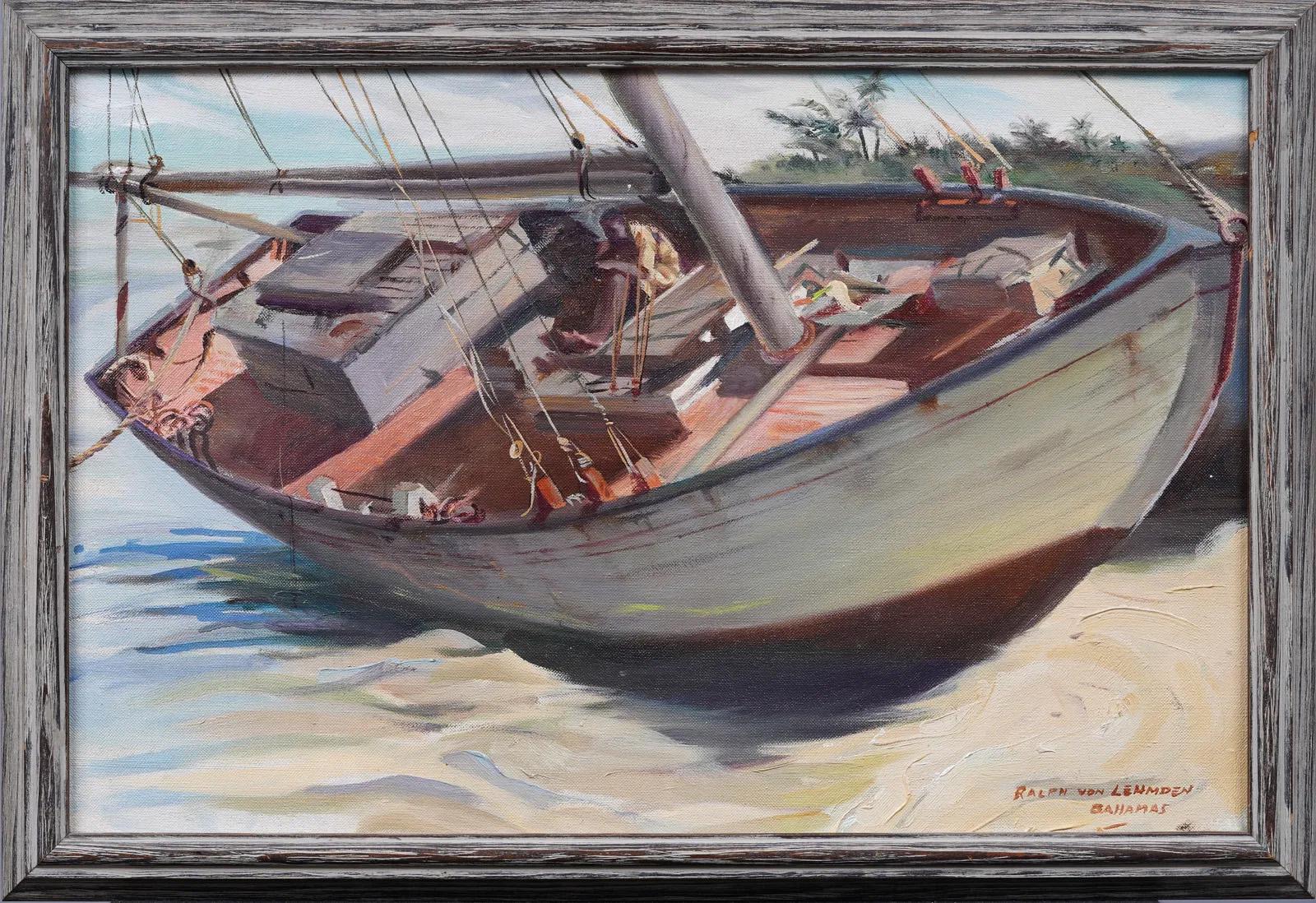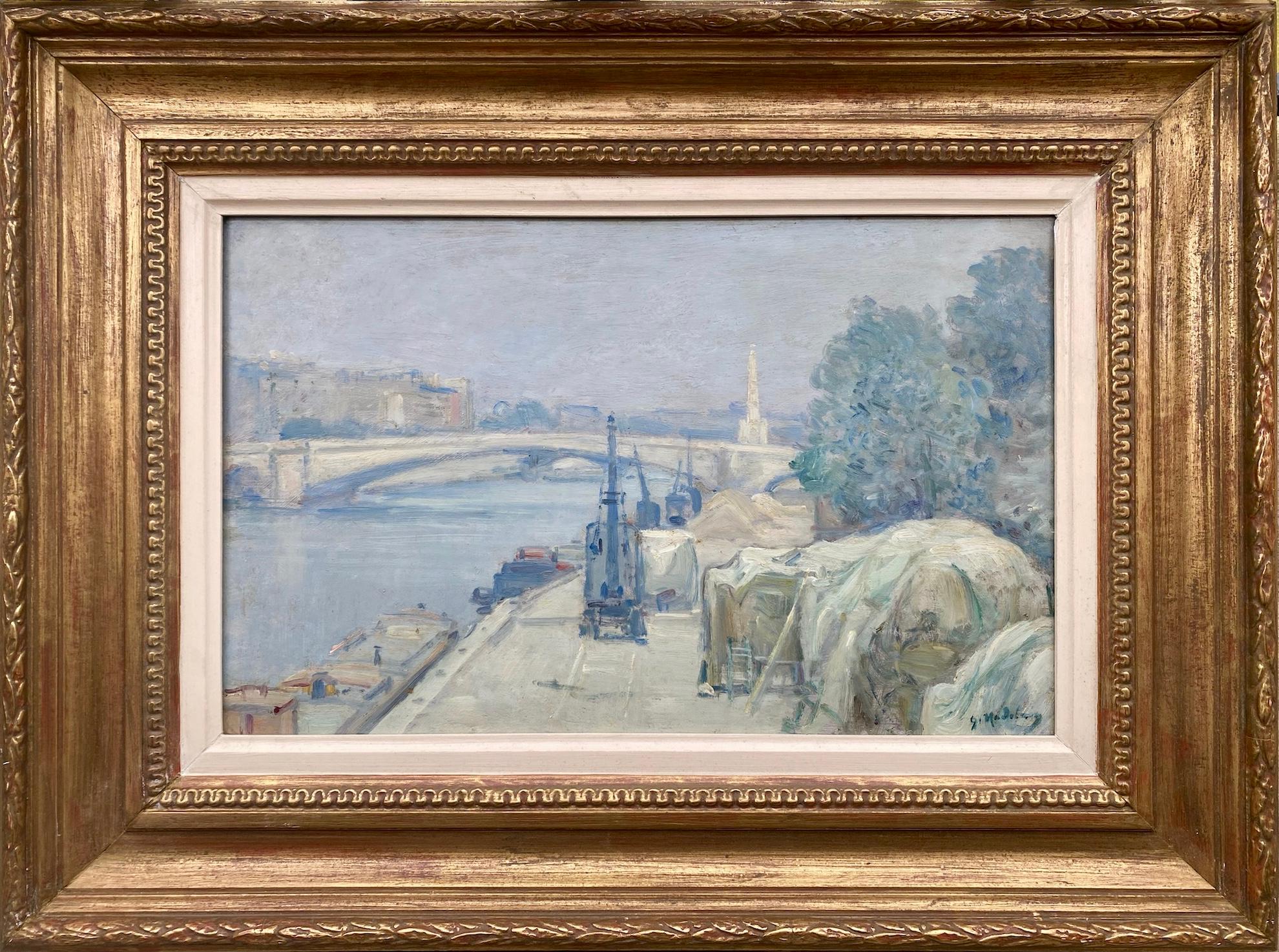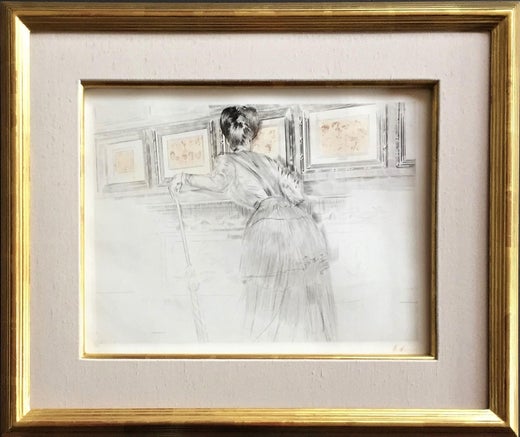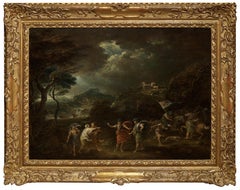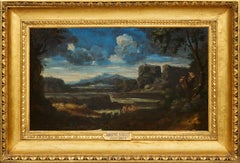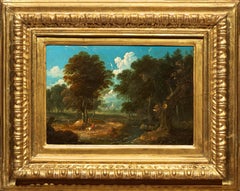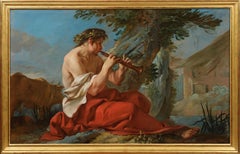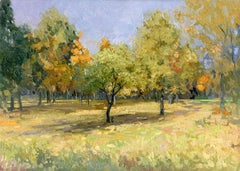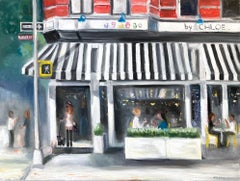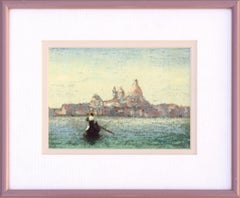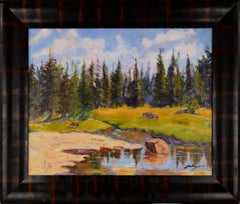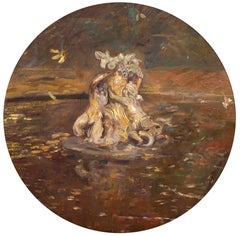
Autumn in Versailles - painting by Paul César Helleu an Impressionist Painter
View Similar Items
Want more images or videos?
Request additional images or videos from the seller
1 of 8
Paul César HelleuAutumn in Versailles - painting by Paul César Helleu an Impressionist PainterCirca 1894
Circa 1894
$55,000List Price
About the Item
- Creator:Paul César Helleu (1859-1927, French)
- Creation Year:Circa 1894
- Dimensions:Height: 33.66 in (85.5 cm)Diameter: 33.66 in (85.5 cm)
- Medium:
- Movement & Style:
- Period:
- Condition:Signed "Helleu" at the bottom left. It appears in the ‘catalogue raisonné’ under the reference HU3-1128. Provenance: Gaston Palewski Louis XVI giltwood frame : 42.13 "diameter (107 cm) This painting has been restored - CR available upon request.
- Gallery Location:PARIS, FR
- Reference Number:1stDibs: LU156828205942
Paul César Helleu
Rich impression with dramatic drypoint burr and tone no other artist epitomizes the whole atmosphere of elegance and hedonistic pleasure which pervaded Paris society at the first decade of the century as does Helleu. A close friend of Proust and the inspiration for one of the principal characters in La Recherche du Temps Perdu, Helleu’s whole life style echoed the incomparable elegance and flow of his drawing, the sheer style of his art, and his eye for the poses of the beautiful women who were his friends and his patrons. During the 1870’s, Helleu had come to know the painters of Impressionism and also artists Sargent and Whistler who became his special friends and inspiration. By the early 1880’s, he had already developed the quality of expressive sweeping line, which is the essence of his drawing, but in 1885 he was encouraged by Tissot to try working on prints in drypoint. At this time, Tissot had decided, after the death of his lover and model Kathleen Newton, to travel to the Holy Land on an artistic pilgrimage. Having decided he would no longer engrave, he gave Helleu his diamond stylus…a literal and figurative “passing of the baton”. It was in the incision and texture of drypoint that his art was to reach one of its greatest peaks. He had an innate feel for the balance between a lightly curving stroke and the deeply cut highly tonal burr of the strongest drypoint. Around the turn of the century he started to combine drypoint with multi-inking in colors, the areas of color restricted to such touches as the bows on the hats, the hair color or the red of the lips. The plate was drawn at a single sitting, and then the color inks were brushed onto it. The results are some of the most splendid and decorative of all Belle Époque prints.
About the Seller
5.0
Vetted Professional Seller
Every seller passes strict standards for authenticity and reliability
Established in 2020
1stDibs seller since 2021
10 sales on 1stDibs
Typical response time: 3 hours
Authenticity Guarantee
In the unlikely event there’s an issue with an item’s authenticity, contact us within 1 year for a full refund. DetailsMoney-Back Guarantee
If your item is not as described, is damaged in transit, or does not arrive, contact us within 7 days for a full refund. Details24-Hour Cancellation
You have a 24-hour grace period in which to reconsider your purchase, with no questions asked.Vetted Professional Sellers
Our world-class sellers must adhere to strict standards for service and quality, maintaining the integrity of our listings.Price-Match Guarantee
If you find that a seller listed the same item for a lower price elsewhere, we’ll match it.Trusted Global Delivery
Our best-in-class carrier network provides specialized shipping options worldwide, including custom delivery.More From This Seller
View AllMacbeth and the Three Witches a Painting on Panel by Francesco Zuccarelli
By Francesco Zuccarelli
Located in PARIS, FR
This painting, created during Zuccarelli's stay in England, represents the decisive moment when Macbeth, together with Banquo, meets the three witches who announce that he will be Ki...
Category
1760s Old Masters Landscape Paintings
Materials
Oil, Wood Panel
Italian Landscape with Jack Players, a painting by Gaspard Dughet (1615 - 1675)
By Gaspard Dughet
Located in PARIS, FR
Here Gaspard Dughet offers us an idyllic vision of the Roman countryside. The stages follow one another in a perfectly structured composition, revealing here a lake, there travellers walking along, gradually leading our eye to the blue horizon. But behind its classical composition, this landscape is particularly interesting because of three anthropomorphic details that the artist has hidden, opening the way to a radically different interpretation...
1. Gaspard Dughet, a landscape artist in the light of Poussin
Gaspard Dughet was born on June 4th, 1615 in Rome where his father, of French origin, was a pastry cook. He was probably named Gaspard in honour of his godfather Baron Gaspard de Morant, who was, or may have been, his father's employer. His older sister Jeanne married the painter Nicolas Poussin (1594 - 1655) on September 1st, 1630. The young Gaspard was apprenticed with his brother-in-law at the beginning of 1631, which led his entourage to name him Gaspard Poussin. The first preserved works of the painter date from the years 1633-1634 and were painted in Poussin’s studio.
Around 1635, Gaspard Dughet became emancipated and began to frequent the Bamboccianti circle. In 1636, he became friends with the painter Jean Miel (1599 - 1656), but also with Pier Francesco Mola (1612 - 1666) and Pietro da Cortona (1596 - 1669).
This was also the time of his first trips throughout Italy. The painter, although of French origin, appears never to have visited France. In 1646 he settled permanently in Rome. A recognized painter with a solid book of orders, he remained faithful to landscape painting throughout his life, alternating between cabinet paintings and large decorative commissions, using both oil and fresco.
Nailed to his bed by rheumatic fever at the age of 58, he died on May 25, 1675.
2. Discovering an idealized landscape
Beyond a relatively dark foreground that takes us into the landscape, we discover a vast bluish horizon: a plateau surrounded by deep ravines advances to the right, overhanging an expanse of water that sparkles below. A road winds through a mountainous mass as if leading us to the fortress that crowns it; another town appears in the distance at the foot of three conical mountains.
The composition is rigorous, mineral, and structured by geometric volumes. The various stages in the landscape lead one to the next attracting the eye towards the horizon located in the middle of the canvas. The general impression is that of a welcoming and serene nature.
In many places the paint layer has shrunk, or become transparent, revealing the dark red preparation with which the canvas was covered and accentuating the contrasts.
Human presence is limited to three jack players, leaning against a mound in the foreground. Their long garments, which may evoke Roman togas, contribute to the timelessness of the scene.
Close examination of the canvas reveals two other travellers on the path winding between the rocks. Made tiny by the distance, their introduction in the middle register, typical of Dughet's art, lengthens the perspective.
While it is difficult to date the work of a painter who devoted his entire life to the representation of landscapes, it is certain that this painting is a work from his later years. The trees that occupied the foreground of his youthful compositions have been relegated to the sides, a stretch of water separates us from the arid mountains counterbalanced by two trees represented on the opposite bank. The introduction of this stretch of water in the middle of the landscape betrays the influence of the Bolognese and in particular of the Dominiquin (1581 - 1641)
A number of similarities with a drawing in the British Museum might suggest a date around 1656-1657, since, according to Marie-Nicole Boisclair , it has been compared with the Prado's Landscape with the Repentant Magdalene, painted at that period.
3. Three amazing anthropomorphic details
While some late Renaissance landscapes offer a radical double reading, allowing one to see both a face or a human body behind the representation of a landscape, it seems interesting to us to hypothesize that Gaspard Dughet had fun here by slipping in a few details that, taken in isolation, evoke human or animal figures.
We will give three examples, looking closely at a cloud, the trunk of a broken tree and the top of a cliff.
The main cloud could thus evoke a Christ-like face or that of an antique god...
Category
1650s Old Masters Landscape Paintings
Materials
Oil
Stag Hunting in the Vicinity of Nuremberg by a German Artist Peter von Bemmel
Located in PARIS, FR
This small landscape shows a hunting scene: two riders are chasing a stag with their dogs at the edge of a forest. Signed by Peter von Bemmel, it is typical of the production of this...
Category
1720s Old Masters Landscape Paintings
Materials
Copper
Mercury and Io, a rediscovered painting by Jean-Baptiste Marie Pierre (ca. 1740)
Located in PARIS, FR
We would like to thank Mr. Nicolas Lesur for confirming the autograph nature of the entire composition after a direct examination of the painting on November 27, 2024.
This painting...
Category
1740s Old Masters Figurative Paintings
Materials
Canvas, Oil
Infanta - Study Number 6, a 1960 painting by Fermin Aguayo after Velázquez
Located in PARIS, FR
Initialled and dated lower right "a/60", countersigned and dated on the back "aguayo 60".
A breath of modernity animates this iconic work, inspired by Velázquez' portrait of the Inf...
Category
1960s Modern Portrait Paintings
Materials
Canvas, Paper, Oil
Christ Falling on the Way to Calvary, a painting by Carlo Francesco Nuvolone
Located in PARIS, FR
This painting by Carlo Francesco Nuvolone, the great Lombard master of the mid-seventeenth century, is striking for its dazzling composition and the brilliant colors of Christ's tuni...
Category
1640s Old Masters Figurative Paintings
Materials
Canvas, Oil
You May Also Like
In the botanical garden, Oil Landscape painting, Plein Air Artwork, Framed
By Simon Kozhin
Located in Zofingen, AG
Artwork description
Original oil painting on cardboard by the artist Simon Kozhin.
Wooden framing with the artist's name.
Simon Kozhin is committed to th...
Category
Early 2000s Impressionist Landscape Paintings
Materials
Oil, Wood Panel, Cardboard
$2,820 Sale Price
22% Off
"Brunch By Chloe NYC Bleecker St" Impressionistic Scene Oil Painting on Canvas
By Cindy Shaoul
Located in New York, NY
"With shades of Pierre Bonnard’s Parisian street vistas and Edward Hopper’s New York shopfronts, American impressionist Cindy Shaoul’s oil paintings depict the much-loved locales and...
Category
2010s American Impressionist Landscape Paintings
Materials
Oil, Canvas
Santa Maria della Salute, Venice - Italian Landscape with Gondola
Located in Soquel, CA
Beautiful figurative landscape of Basilica Santa Maria della Salute in Venice, Italy with a gondola in the foreground by an unknown artist (Italian, 20th Century). Signed indistinctl...
Category
Early 2000s Impressionist Landscape Paintings
Materials
Gesso, Fabric, Oil, Foam Board
Grazing Cows Landscape
By Jack Lynn
Located in Soquel, CA
Beautiful landscape of cows grazing in green pastures surrounded by tall evergreens and a stream, by Monterey area painter Jack Lynn (American, 20th century). Signed "Jack Lynn" lowe...
Category
Late 20th Century American Impressionist Landscape Paintings
Materials
Canvas, Oil
Mid Century Figurative Seascape, Shanghai Floating Market
Located in Soquel, CA
Wonderful mid century figurative landscape of two small boats on blue-green water with three figures in a bustling harbor, by C.C. Chan (20th Century). One of the small boats its being used to sell red fruits, as the vendor weighs them for the customer who is shopping by boat, like in the floating...
Category
Mid-20th Century Impressionist Figurative Paintings
Materials
Canvas, Oil
$715 Sale Price
35% Off
Mid Century Brittany Seascape with Fishing Boats
Located in Soquel, CA
Wonderful mid century impasto seascape of Brittany fishing boats on the water by Walter Prescher van Ed (German/French, 1916-1988), circa 1960. ...
Category
1960s Impressionist Landscape Paintings
Materials
Canvas, Oil
$2,275 Sale Price
35% Off
Recently Viewed
View AllMore Ways To Browse
Antique Whistle Necklace
Antique Rosary Beads
Pearl Rosary
Horse Mother Of Pearl
Round Fountain Basin
Sandra Aska
Sandu Liberman Sabbath Candles
Sandy Gravitch
Sterre De Jong
Stowell Sherman
Tanzio Da Varallo
Taylor Bystrom
Tobias Ross Southall
Tran Mawicke
Wilfred Jenkins
William Henry Longmaid
William Olendorf
Willy Hempel
